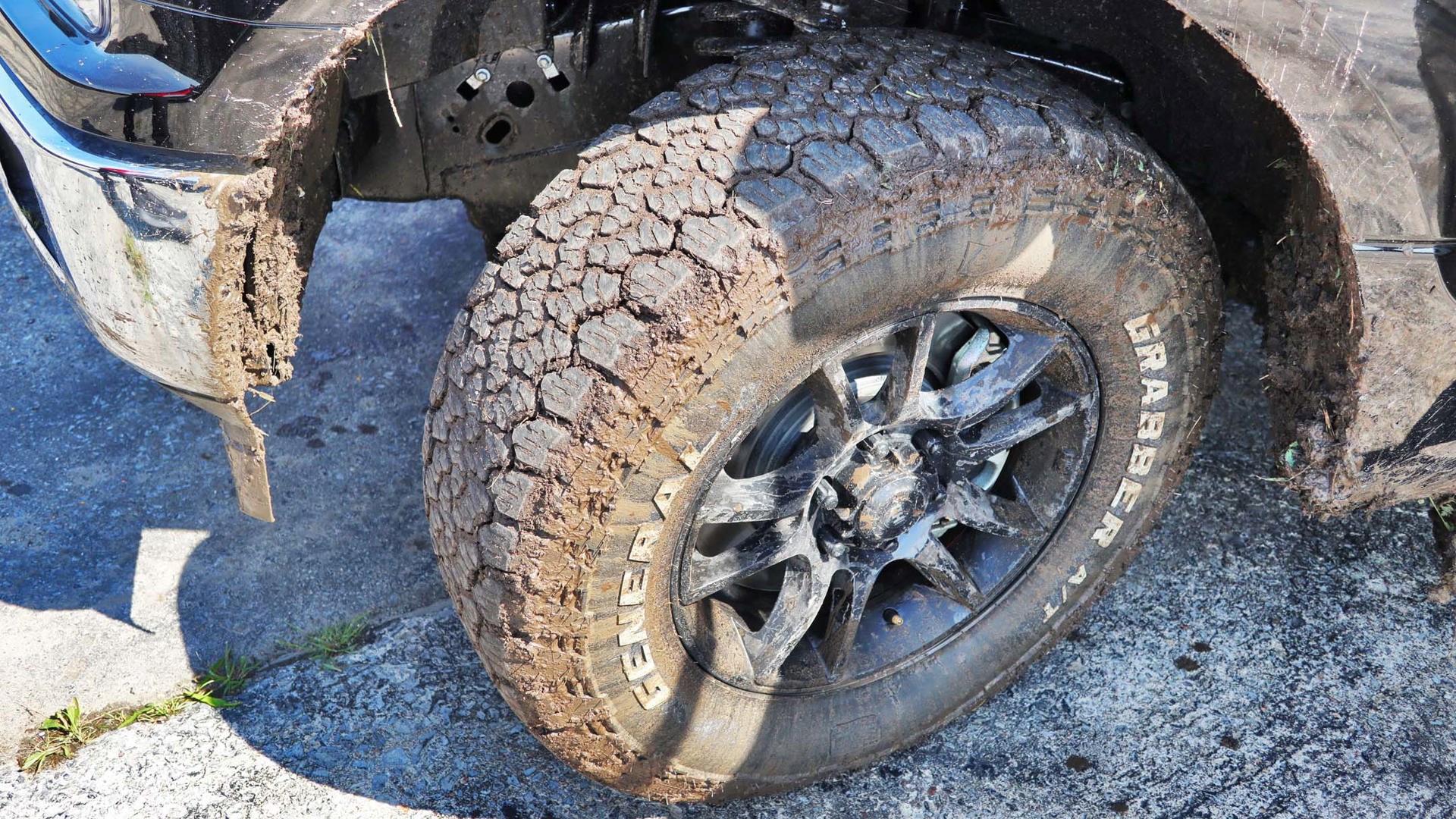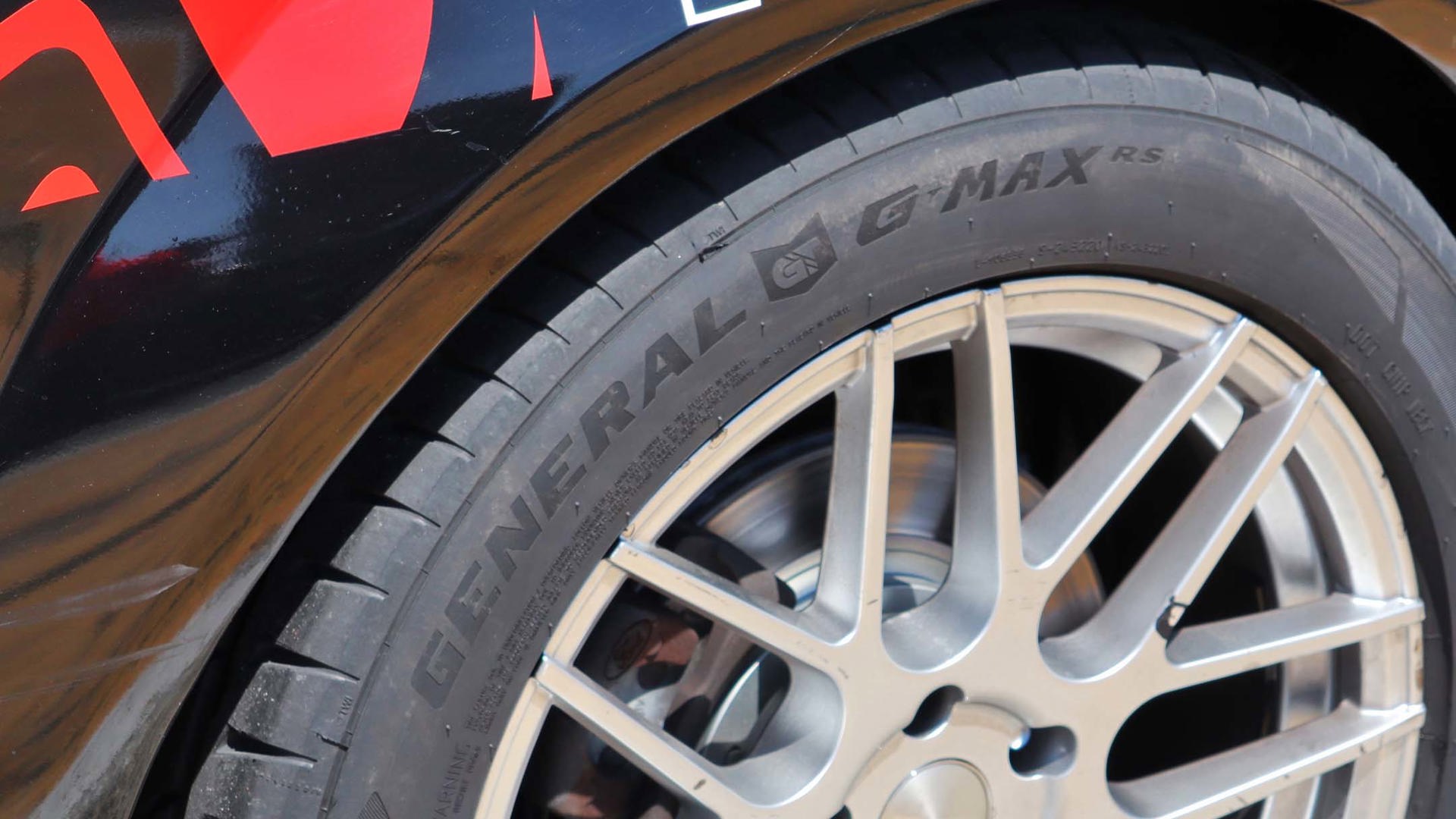MIRABEL, Quebec – I have always been surprised that tire companies have such a hard time selling safety. Automakers have done such a good job of it that many customers don’t fully understand how some of the higher-tech safety features work, but insist on them anyway.
But tires? They’re usually a grudge purchase, bought only because the last set finally wore out. And yet tires are the single most important safety feature on any vehicle, no matter how many other ones it has. Good brakes won’t stop you, neither will stability control systems keep you in a straight line, if your tires just slide along the asphalt instead of gripping it.
The Importance of Grip

At an event held at Quebec’s ICAR circuit, Continental Tire sent me out on several driving exercises. It was meant to showcase three new tires – two from General Tire and one from Continental – but also illustrated how important good, well-maintained tires are for driver safety.
I tossed a car hard left-to-right over a slalom course; I made quick lane changes and braked hard on wet pavement; I pushed hard into a turn. Many drivers might argue that they never drive that way, and in some cases I did look like those idiots you complain about as they zip recklessly around you in traffic. But the reality is that one day you might have to make an emergency manoeuvre – a child runs out in front of you, or a car suddenly comes over into your lane – and the condition and quality of your tires could make all the difference in the outcome.
All of that comes down to grip. No matter how big the tire is, only a small portion of it touches the road surface at any time. That’s called the contact patch, and it’s the only thing between your vehicle and the road. Your brakes stop the wheels from turning, but your tires actually bring you to a stop; your steering wheel turns the wheels, but it’s your tires that take you in that direction.
Designed to Perform

Tires are designed for specific conditions – winter, off-road, all-season, high-speed driving – and the price differences between them depend on several factors. “The main elements that make a tire perform are the rubber compound, the tread design, and then the carcass, which is its internal construction,” says Leo Chan, product manager for Continental Tire Canada. “All three work in harmony to provide the performance we designed it for.”
Tread may look like a random design, but it’s engineered for the tire’s purpose. “On a winter tire we have more edges on the tread blocks,” Chan says. “The scientific term is ‘pitch’, and more pitch allows more grip on snow surfaces. On a summer high-performance tire you have much bigger tread blocks, especially on the shoulders (edges), where they provide lateral cornering grip.”
Compound is the “rubber” in the tire, consisting of natural rubber mixed with synthetic rubber, carbon black, silica, and chemicals to produce a proprietary blend. Winter compounds stay softer in cold temperatures for better grip, while summer tires stay firmer but grippy in hot weather. All-season tires bridge the gap between the two: they’re convenient because they can be left on year-round, but their cold-weather performance falls short of dedicated winter tires.

Getting Your Money’s Worth
You get what you pay for, and for the most part, premium tires perform better than cheap ones. Their cost includes their materials but, just as with vehicles, a major chunk of change goes into their research and development. Cheap tires don’t have as much of that invested into them, which can translate into lesser performance.
Tires are rated by tiers, with Tier 1 being the premium segment and Tier 2 the “value” segment. Most original-equipment tires (the ones that come with your new vehicle) fall into these tiers; for example, Continental is the company’s Tier 1 brand, while General is its Tier 2 marque. Tier 3 products are bargain tires, while Tier 4 tires are usually offshore makes that don’t have a company or marketing presence in Canada. These are often imported in container-loads by wholesalers who distribute them at cut-rate prices, with cut-rate performance to match.
Checking Tread Depth and Wear

There are a few indicators that it’s time for new tires, one of the most important being tread depth. If there isn’t enough tread, there isn’t enough stopping and steering performance. Look for horizontal rubber bars, known as “wear bars”, which run perpendicular to the tread across the tire’s face: they’re hard to see on a good tire, but easy to spot on a worn one.
You can use a tread-depth gauge, an inexpensive purchase at auto-parts stores, to measure the depth: at 4/32 (of an inch) or 3/32 you should consider replacement, and at 2/32 you’re in the “not safe” and “replace immediately” zone. You can also use the “Bluenose Test” by putting a dime upside down in the tread. If you can see all the Bluenose ship’s sails, it’s time for new rubber.
Other warning signs can include increased stopping distances or poor steering response; bulges or cuts on the tire sidewall; deep cuts across the tread; or too many puncture repairs.
Buying Replacements

When buying new tires, Chan recommends buying the same size and rating as when the vehicle was originally delivered. This includes load ratings for pickup trucks or large SUVs, and speed ratings for performance vehicles. If you’re buying winter tires for a vehicle with large wheels and lower-profile tires, it’s possible to buy smaller replacement wheels and winter tires with taller sidewalls – keeping the outside diameter the same – to reduce the possibility of pothole damage.
Look at the tire’s warranty as well. Continental’s Total Confidence plan is one of the few with a one-year road hazard warranty, Chan says, in addition to defect warranty, roadside assistance, and a trial satisfaction period.
New Continental and General Tire Offerings
Here’s a closer look at the three tires showcased at the event.
Continental PureContact LS

This all-season tire replaces the previous PureContact, with a new tread pattern and compound that maintains the tire’s wet and dry performance, but with less rolling resistance (which helps improve fuel economy) and longer tread wear. The “LS” stands for Luxury Sport and is intended for luxury sedans and coupes, as well as crossovers and minivans.
The company says the new tread pattern reduces road noise by 50 percent compared to its predecessor, while a chemical additive in the compound improves grip on wet or slippery roads. An absorption layer under the tread smooths out the ride. The tire goes on sale in January 2019, available for 16- to 20-inch rims.
General Tire Grabber A/Tx

This all-terrain tire replaces the Grabber AT² and is meant for Jeeps, pickup trucks and SUVs. The tread features large voids to reduce mud build-up and protruding shoulder blocks to reduce rock damage. The tread pattern and an absorption layer under it reduce noise during on-road driving.
The Grabber A/Tx is an all-weather tire with the three-peak mountain-snowflake logo, meaning it qualifies for winter use where required by law or for insurance discounts. It can also be studded. It comes in sizes from 14- to 20-inch rims (LT-Metric, Flotation, and select Metric sizes) with an MSRP between $214 and $788 depending on size.
General Tire G-MAX RS

The G-MAX RS is General’s first summer UHP (ultra-high-performance) tire, intended for sports and muscle cars. The emphasis is on dry-weather handling, but the silica-rich compound provides grip on wet surfaces, and the large circumferential grooves evacuate water to reduce the possibility of hydroplaning.
It comes in sizes ranging from 16- to 20-inch rims, with MSRP between $180 and $584, and with a 45-day trial warranty. The tire features a unique tread wear monitor: the letters in REPLACEMENT TIRE MONITOR are at different depths, and when the tread gets low enough, it changes to REPLACE TIRE – and we think it’s the coolest thing we’ve seen on a tire yet.
















